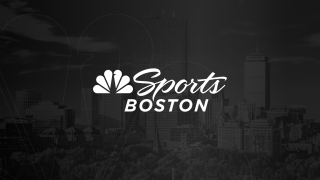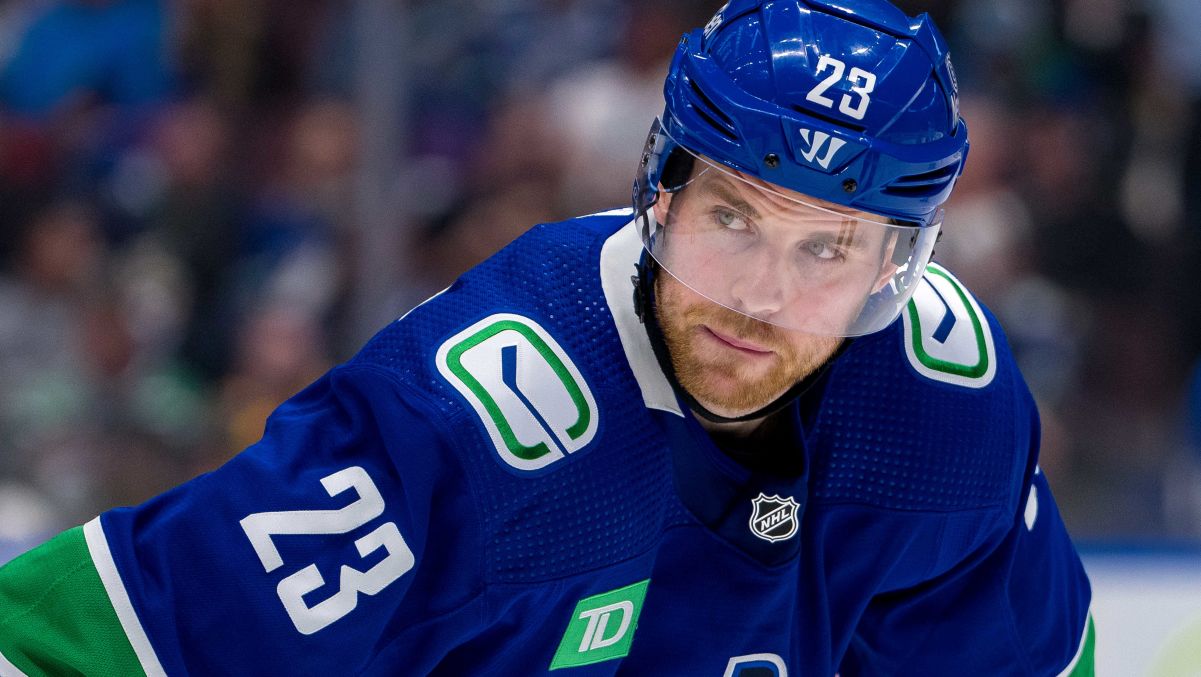
With the bye week upon us, we present a five-part series breaking down Boston’s 17-3-3 run the past two months and how the Black and Gold have gone about making the surge from Atlantic Division bottom dweller to legitimate playoff contender. Today, in Part Three, we look at the Bruins defensemen corps turning from big weakness two years ago to undeniable strength this season.
Don Sweeney’s biggest task since taking over as general manager three years ago was not an easy one: Find a young, transitional defenseman who could chew up big minutes, move the puck with efficient, unrelenting poise and essentially be groomed to take over as the No. 1 defenseman with Zdeno Chara entering NHL old age.
BEHIND THE B's SURGE
- Part One - Coaching has been key to hot streak
- Part Two - Young talent developing ahead of schedule
- Part Four - After Rask's rough start, goalie tandem fuels run
- Part Five: Offense comes to life
It was a huge void on a couple of Bruins teams that painfully missed the playoffs while casting off Johnny Boychuk and Dougie Hamilton in trades, and was forced into miscasting Kevan Miller, Torey Krug and Adam McQuaid as top-four defensemen for a damaging lack of better alternatives.
Well, that is no longer the case with these Bruins, who have fortified their back end through youthful reserves and turned a position of weakness into an undeniable strength by drafting, developing and utilizing the young back-enders running through their system.
The solidity of the B’s back end was on full display as the team ripped off win after win in their final 23 games ahead of the bye week and there’s no reason to think that won’t continue for the rest of this season and beyond.
Boston Bruins
Charlie McAvoy, Brandon Carlo and Matt Grzelcyk are all in their first or second full NHL seasons, but they’ve assimilated quickly to all things Boston, and with a really surprising lack of long, error-filled learning curves.
“There still is [a learning curve], but I think they’re good,” said Cassidy, succinctly describing why a youth-filled back end has been so good this season. “They’re good players and good players will eventually find a way in this league, some more quickly than others. Charlie was right out of the gate, and [Grzelcyk] took a little while to get to where he is. I think his [defensive] partner really helped. I think they’re a good tandem and they help make each other better, and I think that’s really what you want out of any defense pair.
“Carlo came in last year, so I guess he’s the veteran of the [young D-men] bunch. He had a good partner last year that got him through some things, and now this year he’s got Torey [Krug] and they’re still working on how their chemistry best fits. They’re good players. That’s the best way to put it and I think they’ve been paired with the appropriate partner to help them. The team is winning, we’ve got good defensive forwards that can cover up for some mistakes [and the fact they’re good] are probably the three biggest reasons for success.”
Certainly, Carlo will catch the occasional edge at a bad time or author the occasional bad turnover, McAvoy is almost certain to hit some kind of wall at some point during his first 82-game regular season and Grzelcyk is a player that will be overpowered if he gets bottled up in his own zone. But those three youngsters paired with Zdeno Chara, Torey Krug and Kevan Miller have helped transform Boston’s back end into three ideal ‘D’ duos with puck-moving greyhounds and grizzled D-zone warriors balancing each other out on each of them.
The endless D-to-D passing in the defensive zone and the errant outlet passes aren’t as prevalent with the B’s as they were a couple of years ago, and that’s a reflection of the coaching, the talented personnel and the on-ice mentality these days.
Perhaps nowhere is Boston’s newfound strength and depth on the back end more illustrated than in this season’s development of Grzelcyk. The 24-year-old was coming off his first pro season in Providence where he put up six goals and 32 points in 70 games, and certainly didn’t do anything to dissuade his status as an NHL prospect. Still, there were questions about how his 5-foot-9, 174-pound frame would play in the NHL on a consistent basis and the fact that Torey Krug already filled the undersized, puck-moving role in Boston.
As it did for a number of young players with the Bruins, injuries opened up a spot for Grzelcyk once Adam McQuaid went down with a broken leg. The Charlestown, Mass. native hasn’t looked back since that Black and Golden opportunity with a goal, five points and an impressive plus-13 rating in 22 games paired mostly with stay-at-home warrior Kevan Miller. He has used his superior skating, really solid hockey instincts and a conservative approach to what he’s seeing on the ice into very good success at the NHL level.
“It’s his strength, so he’s got to play to his strength. He’s a good puck-mover and once he comes out of that turn [retrieving the puck] he tends to separate very well. He can see the ice. We’re playing fast and that is certainly part of it as we’ve talked about improving that position this year,” said Cassidy. “He’s been a big part of it. If he starts to drag it back further and run out of room that brings more fore-checkers down, and if they get angles and bodies on him then it’s not playing to his strength.
“The assertiveness and the confidence to [move the puck quickly] is an important part of what we’re doing, and that’s what we had to bring out of him this year. I don’t think it was automatically there last year or in the first few games of the preseason this year, but it’s something he had to buy into doing and he has done that. I think he will only grow. We’ll see him walking along the blue line and at the other areas of the ice, we hope, and the result will be more offense.”
Grzelcyk has been so good at balancing out the defense pairings, in fact, that McQuaid wasn’t able to get back into the lineup despite regaining full health in late December. As of this week, the Cup-winning veteran is still waiting for his first crack at playing again in a development that would have been unheard of in year’s past.
Clearly, the Bruins won’t stay healthy on the back end forever with a dense second-half schedule expected to cause some roster attrition and McQuaid will get his chance. But the emergence of the Grzelcyk creates an interesting depth situation with the Bruins.
Could McQuaid or even Torey Krug become a moveable piece for the B’s with a young, inexpensive, puck-moving, left shot-defenseman showing he’s got the stuff to be an NHL-caliber player? Is there a high enough ceiling for Grzelcyk offensively that he could someday soon approach the 10 goals and 50 points that Krug posts as a PP standout?
Grzelcyk still really hasn’t shown next-level potential at the offensive end of the ice and that is one of his focus areas in the second half now that he’s established a consistent level of competent play in the NHL.
Given that the Bruins are in the market for a frontline, left-side defenseman capable of playing big-time minutes in all situations, it would point to either Krug or Grzelcyk being surplus on the left side just as McQuaid qualifies as that on the right side right now.
One name barely mentioned in all of the permutations and developments this season: Chara. At 40, Bruins captain has been very good this season playing in the last year of his contract. He’s an aging linchpin on the back end, but a linchpin he still is after all of these years in Boston.
He still leads the Bruins in ice time (23:30), still holds down the title of No. 1 defenseman and is pacing for a decent six goals and 22 points (without power-play time) while sharing the team lead with a plus-20 rating this season. Just as Patrice Bergeron holds down the identity, attitude and work ethic up front among the forwards, Chara does the same on the back end while mentoring young players like Carlo and McAvoy.
“[It’s] the little things that happen in the room every day, his willingness to mentor younger players and work with the staff in that area. You can’t say enough about his ability to defend. He starts transition; he wants to be involved in that part of the game,” said Cassidy. “He is just a guy with a lot of pride, a lot of character, a lot of heart, and knows how to win. I think that permeates throughout our lineup. “Bergy [Patrice Bergeron] is the same way up front. I think these young guys are learning lessons every day on this.”
In other words, Chara continues to freakishly defy Father Time and looks like he’ll do it for another two to three years in Boston at the very least as the young D-men continue to take over the reins. He’s in the perfect situation as the dean of a young, developing back end where he can show McAvoy and Carlo – and the next wave of B’s D-men – how to be a pro.
While the Bruins are solid in the goals against (sixth in the NHL) and power play (11th in the NHL) categories this season as they were expected to be under Cassidy, they have been even better than expected on defense (third in the NHL with 2.5 goals allowed per game) and on the penalty kill (eighth in the NHL with an 89.1 kill rate). Those were a couple of areas that the Bruins have really excelled in their 17-3-3 stretch headed into the bye week, and where they adjusted most when injuries hit early in the year.
It’s also one of those team traits that helped turn Boston from an exciting, young up-and-comer into a legit contender this season.
It’s amazing to think just a couple of years ago that Boston’s defensemen situation was the biggest thing holding them back. The losses of Boychuk and Hamilton were crippling. Devoting attention to drafting and developing the next generation of D-men has not only addressed the situation but has quickly turning Boston’s back end into a strength guiding the team again toward elite status.
It’s probably not exactly the way Sweeney and Co. drew it up to start, but it’s got the Bruins back where they need to be even sooner than originally expected.


